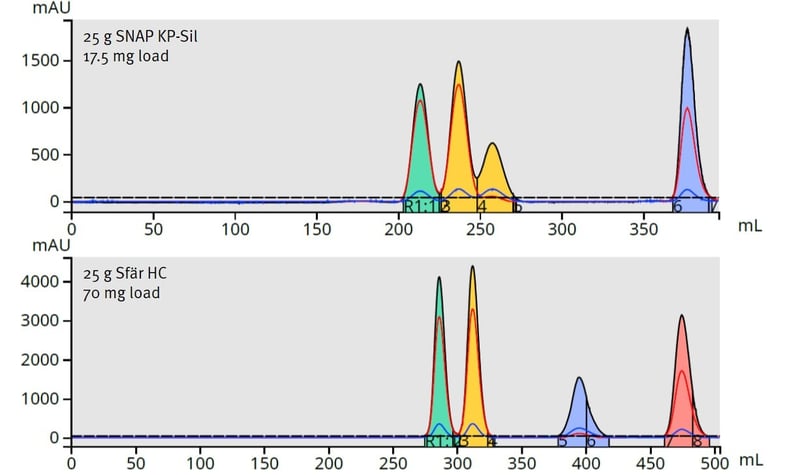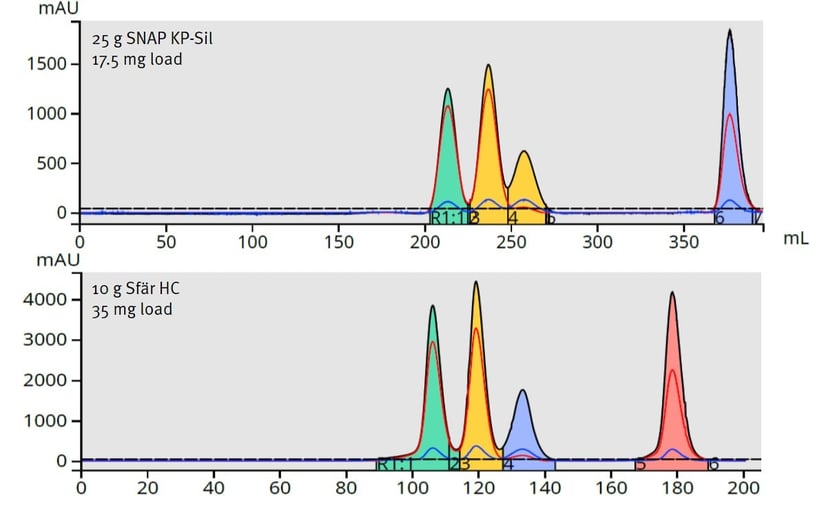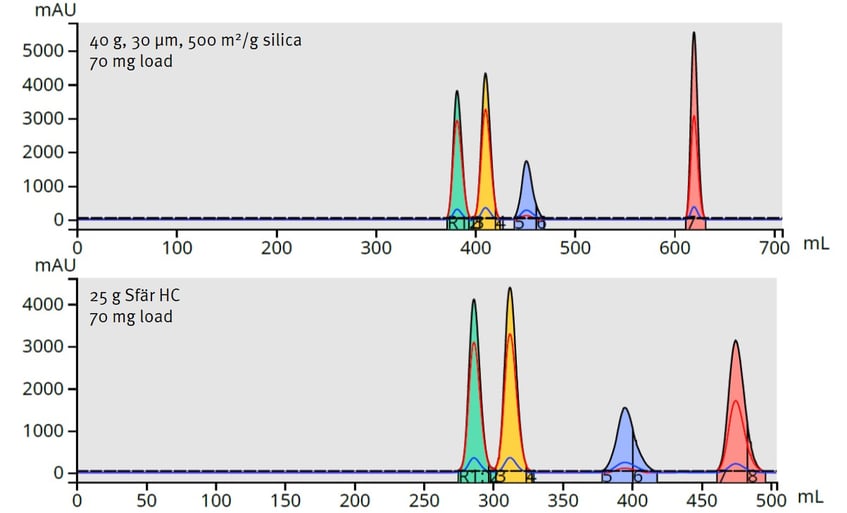In our more environmentally aware climate, chemical and pharmaceutical companies now prioritize reducing organic solvent use in chemistry labs. Employees and shareholders alike are pushing their companies to become greener which impacts how chemistry, both synthesis and purification, is performed.
Which strategies are best for achieving "greeness" with flash chromatography? In this post, I discuss several options but focus on one particularly simple, effective, and inexpensive change you can make.
A little backstory may help set the stage for why I posting on this topic. At the request of a major pharma company a few years back, I presented some green flash purification options to a group of medicinal chemists. My host started the group discussion by saying that flash chromatography consumed 60% of the solvent used in their medicinal chemistry department. He also mentioned that from a corporate perspective, this was not sustainable or acceptable.
Some “greener” options I discussed with this group included gradient optimization, using smaller particle silica, and reversed-phase, all great “green” purification options.
Since this meeting, we have seen further improvements in flash chromatography technology including column design and media.
The most impactful improvement with columns is the move away from traditional irregular, large particle (~50 µm), low surface area silica (~500 m2/g) columns to smaller particle, spherical silica with higher surface area (~20 µm, ~700 m2/g).
These changes are important for two reasons…
- Surface area and loading capacity are directly linked, so it makes sense that higher surface area silica increases sample load amounts
- Likewise, smaller particles reduce compound bandspreading during elution (elute compounds in narrower bands or peaks). Tighter bands improve the amount of separation between adjacent eluting compounds, increase loading capacity, and collected fraction purity.
So, in theory, by using smaller columns packed with higher surface area, smaller particle silica you can purify your crude mixture with less solvent without sacrificing compound purity. To paraphrase an old beer commercial – less solvent, more green.
To test the theory I ran three column comparisons using the same crude mixture and gradient.
- -A 25 gram column packed with irregular, ~50 µm, ~500 m2/g silica (Biotage® SNAP KP-Sil) vs. a 25 gram column packed with spherical, ~20 µm, ~700 m2/g silica (Biotage® Sfär HC)
- -A 25 gram KP-Sil column vs. a 10 gram Sfär HC column
- -A 40 gram column packed with spherical ~30 µm, ~500 m2/g silica vs. a 25 gram Sfär HC column
For the first comparison, I loaded 17.5 mg achieving a suitable separation on the KP-Sil column. To match the KP-Sil column separation I had to increase the Sfär HC column load to 70 mg (4X higher), Figure 1.

Figure 1. Separation comparison between 25 gram columns shows the high performance column provides a better separation even at 4X the sample load. Top - "standard" 50 µm, 500 m2/g silica with a 17.5 mg load. Bottom - 20 µm, 700 m2/g silica with a 70 mg load.
This data supports the premise that “high performance” silica with more surface area and smaller particles has more loading capacity than “standard performance” silica.
The second evaluation compared the 25 gram KP-Sil column (17.5 mg load) to a 10 gram Sfär HC run with a 35 mg load, Figure 2.

Figure 2. This column comparison shows that a 10 gram high performance column can purify 2x the amount of crude material than a 25 gram column packed with standard silica and reduce solvent use 50%. Top - standard 25 gram column (17.5 mg load). Bottom - 10 gram high performance column (35 mg load).
Even though the 10 gram Sfär column contains 60% less silica it was able to purify twice as much crude sample and used 200 mL less solvent (50% less) than the 25-gram KP-Sil column. This is a major improvement in reducing solvent.
For the third comparison I looked at a non-Biotage high performance column packed with 40 grams of spherical, ~30 µm, ~500 m2/g silica to a 25 gram Sfär HC column (~20 µm, ~700 m2/g) using the same load (70 mg), Figure 3.

Figure 3. This comparison of columns packed with similar particle size silica shows that a smaller, 25 gram column packed with high surface area media performs as well as a larger, 40 gram column with average surface area sorbent. Top - 40 gram, 500 m2/g silica with a 30 µm particle. Bottom - 25 gram, 700 m2/g, 20 µm silica.
Though both columns are filled with small, spherical particles, the smaller 25 gram column with more silica surface area provides a better separation and reduces solvent consumption (28%), compared to a 40 gram column.
In all of the above examples you can see the tangible benefits provided by flash columns packed with small particle, high surface are silica...
- -Reduced solvent consumption
- -Maximized loading capacity
- -Reduced operation costs
Going green is easy - just change columns. No need to change methods or load amounts. Load what you normally would but on the smaller, high performance column.
How much smaller? From the data presented here, you can reduce column size anywhere from 2 to 4X.
- If switching from standard ~50 µm, ~500 m2/g silica, then column size can be reduced up to 4X.
- If switching from a small particle (~30 µm), 500 m2/g silica, then reduce column size up to 2X.
If column costs are a concern, these high performance columns typically cost less than the columns they replace making flash chromatography even greener.

